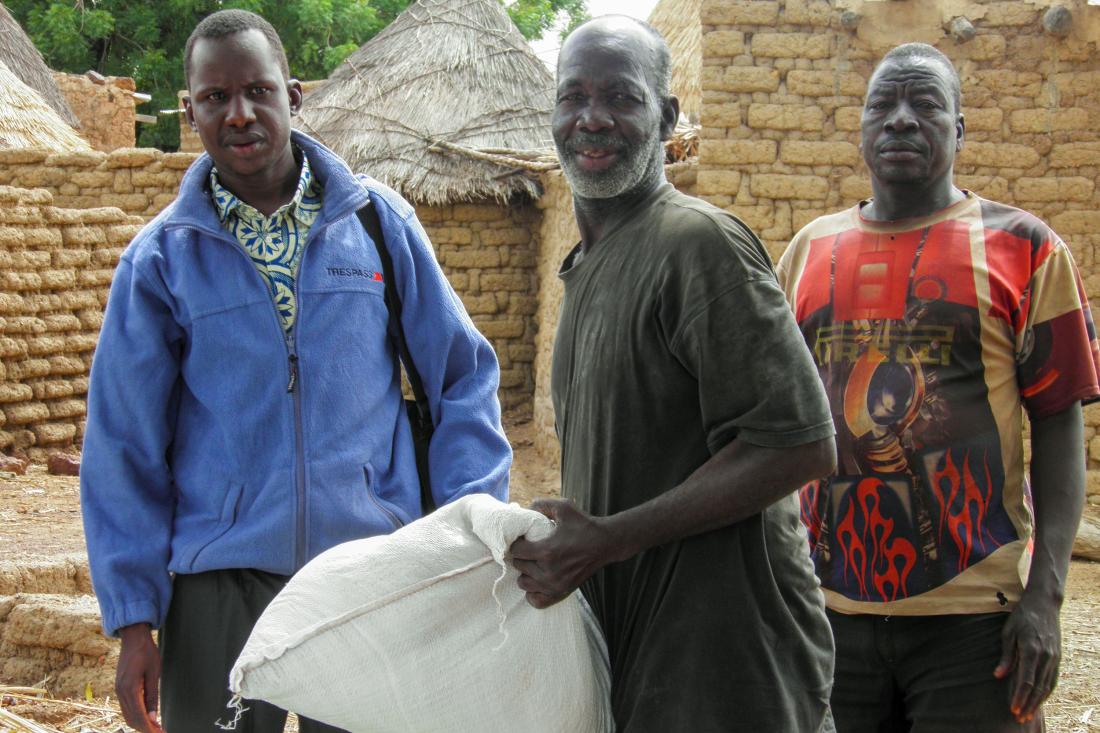The Impact of Agro-dealer Training on Input Adoption and Productivity Among Smallholder Farmers in Niger
- Farmers
- Agro-dealers
- Technology adoption
- Fertilizer and agricultural inputs
- Improved seeds
- Training
Improved agricultural techniques and inputs, such as improved seeds or fertilizers, are vital to increasing agricultural productivity, especially among subsistence farmers. However, input adoption remains low. In Niger, researchers evaluated the impact of a training program for input distributors (agro-dealers) on smallholder access to and use of agricultural inputs. Researchers found that trainings for agro-dealers combined with a demonstration plot increased the share of farmers adopting improved seeds, but did not increase the quantity used to have an impact on agricultural output.
Policy issue
Improved agricultural techniques and inputs, such as improved seeds that produce higher yields or fertilizers, are vital to increasing agricultural productivity, especially among subsistence farmers. This is especially true in much of sub-Saharan Africa, where arid climate and poor soil quality make it difficult for subsistence farmers to increase agricultural yields, their incomes, and food security. Yet, adoption of improved agricultural inputs by smallholder farmers has been slow. Many factors, such as affordability and limited information on input markets, account for low input adoption among subsistence farmers.
Distributors of agricultural inputs (agro-dealers) may be an important vehicle through which to address some of these barriers and promote input adoption among small-scale farmers. Strengthening their networks may generate a more efficient supply of inputs, where quality inputs are available for farmers at the right time in the planting season. Ensuring agro-dealers provide accurate information to farmers on the application of these inputs may also increase demand among smallholders. Does training agro-dealers to effectively supply agricultural inputs and build knowledge of farmers on how to use them improve smallholder farmers’ access to, and use of, agricultural inputs?
Context of the evaluation
The need for greater agricultural yields is especially acute in Niger. Much of Niger is arid. Poor soil quality is further compounded by highly seasonal rainfall and an inefficient supply of agricultural inputs. In three regions of Niger— Maradi, Zinder, and Tahoua—where this evaluation was conducted, the main livelihood activities are crop farming and livestock breeding.
Agricultural inputs by smallholder farmers in Niger is limited. Farmers apply less than a tenth of the amount of fertilizer per hectare than others in West Africa, that is 1.1 kg per hectare compared to 16 kg per hectare on average elsewhere in the region. Only about 12 percent of agricultural land is cultivated using improved seeds. This is further hindered by an inefficient input distribution network where agro-dealers do not have enough business knowledge to improve their operations and increase supply of inputs to farmers.

Details of the intervention
In partnership with Contribution à L’Education de Base (CEB) and Alliance for a Green Revolution in Africa (AGRA), researchers evaluated an agro-dealer training program, with and without guidance to set up a demonstration plot, that aimed to reinforce agro-dealer networks and the knowledge and practices shared with farmers. The training was offered in business skill development and technical competence. The training aimed to: build business skills, such as input ordering, distribution, and marketing; facilitate business relations between agro-dealers and other private sector actors; and facilitate the development of business plans by agro-dealers to enable them to obtain credit. The program also supported agro-dealers in constructing demonstration plots to showcase different improved technologies to create awareness and demand for inputs among farmers.
Researchers randomly assigned 144 agro-dealers to one of three different groups serving about 1,500 households:
- Training only group (500 households): training on input ordering and marketing
- Training plus demonstration group (510 households): training, with support to set up a demonstration plot
- Comparison group (500 households): neither training nor support to establish a demonstration plot
Almost a year later, researchers surveyed farmers to measure the program’s impact on agricultural input expenditures, input use and quantity used, use of soil and water management practices, crop yields, and pre-harvest crop losses.
Results and policy lessons
Agro-dealer training with a demonstration plot had a positive impact on the use of improved seeds by farmers compared to training only. Demonstration plots constructed by agro-dealers, however, only increased the proportion of farmers that adopted improved seeds, rather than the intensity of use. In line with the limited increase in adoption of inputs, the agro-dealer training with or without the demonstration plots did not increase farmers’ crop yields or reduce their pre-harvest crop losses.
Access to and uptake of agricultural inputs: The agro-dealer training had no impact on the expenditure on seeds, chemicals, fertilizers, and no impact on the quantity of seeds used by farmers. It did not significantly impact the proportion of households that used chemicals on their farms, which was already high initially (at 54.5 percent). Agro-dealer training had no significant impact on the likelihood that farmers used soil and water management techniques.
Agro-dealer training plus their demonstration plot significantly and positively increased the probability of using improved seed. Demonstration plots had a significant value add to the training only with respect to seed use. Neither agro-dealer training nor training plus a demonstration plot significantly impacted the quantities of improved seed used or expenditure. Agro-dealer constructed demonstration plots only increased the proportion of farmers that used improved seeds, not the intensity of seed use.
Agricultural productivity and yield: Although agro-dealer training plus demonstration plot led to significant increases in the adoption of improved seed, this did not translate into significant differences in crop yields or pre-harvest crop-losses.
Researchers hypothesize that the low level of input adoption and use was due to insufficient access to credit. As such, they suggest that factoring credit into the planning would be important for scaling of this program. Without sufficient access to credit, farmers could not make investments in their farms.
